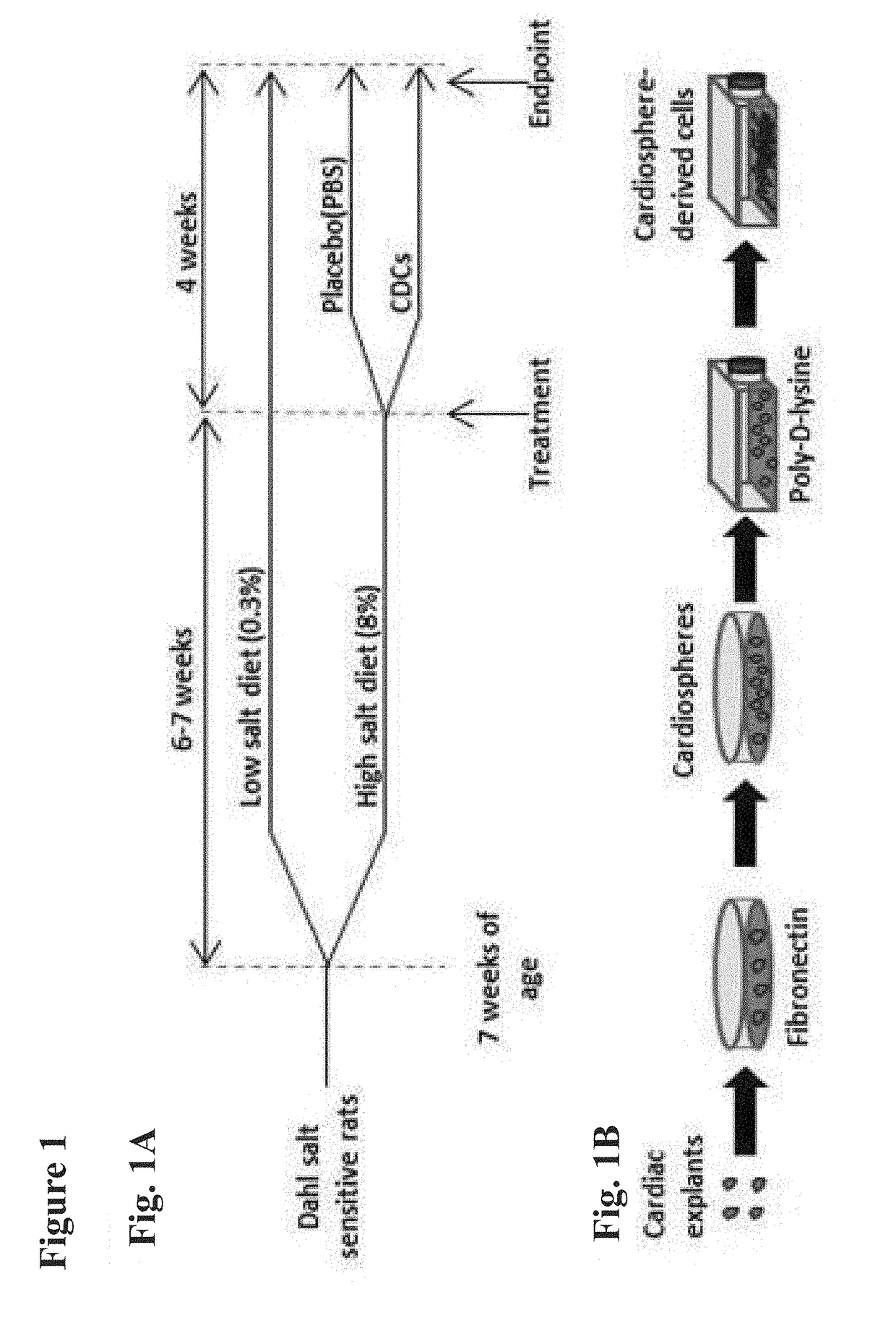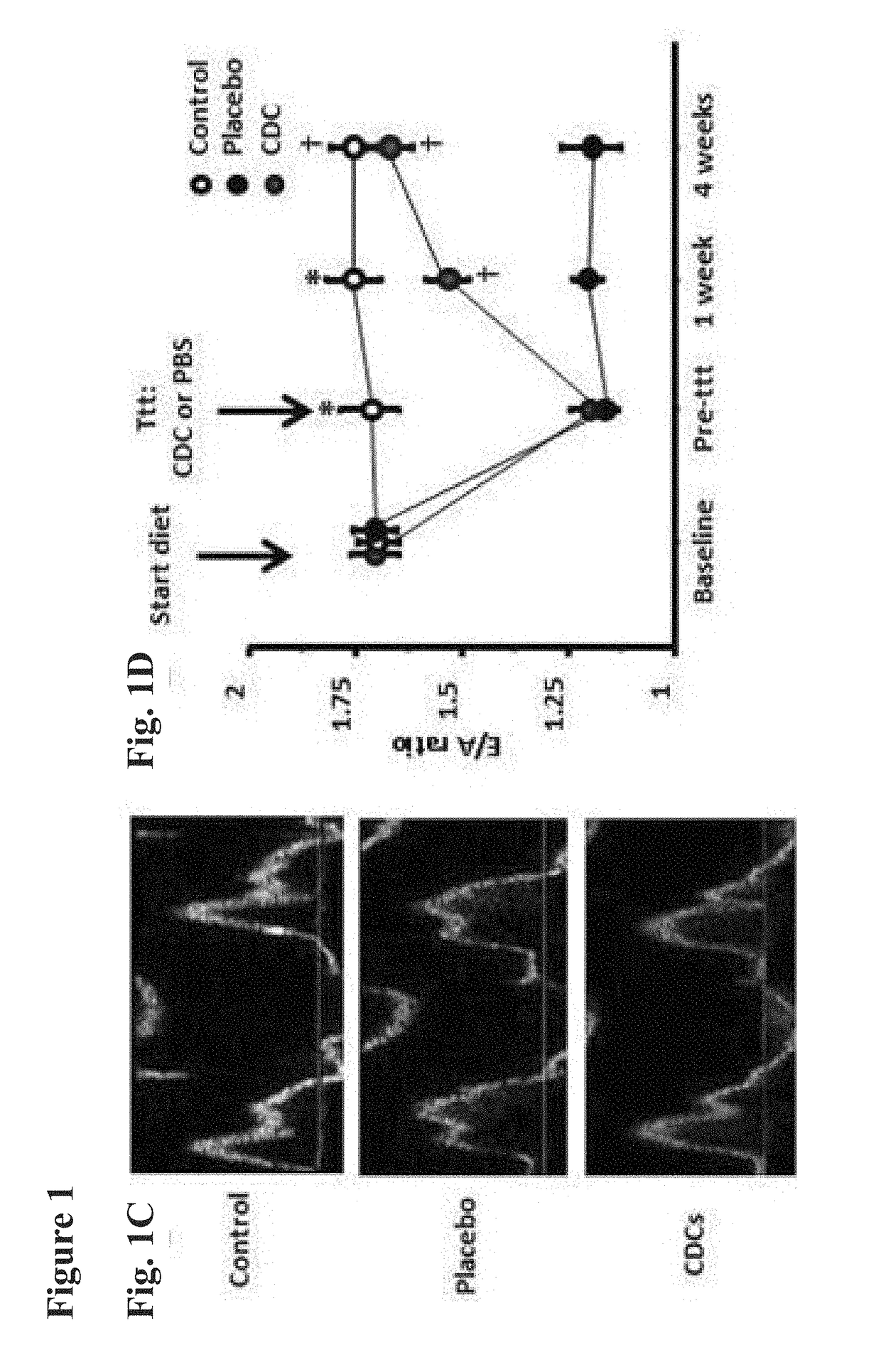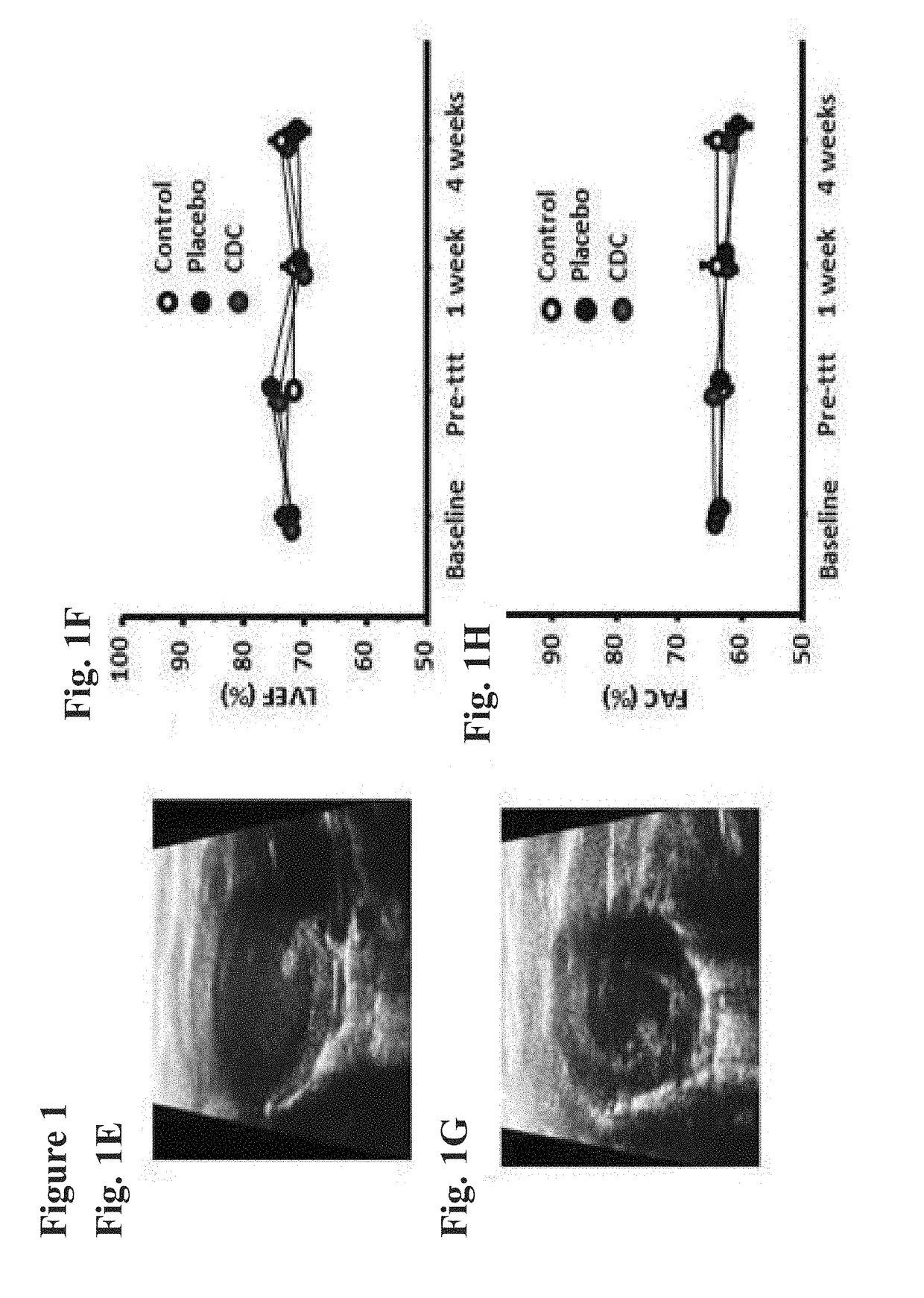Cardiosphere-derived cells and exosomes secreted by such cells in the treatment of heart failure with preserved ejection fraction
a technology of exosomes and cells, applied in the direction of skeletal/connective tissue cells, medical preparations, pharmaceutical delivery mechanisms, etc., can solve the problems of inability to completely elucidate the underlying pathophysiological mechanisms, no treatment has been proven to reduce morbidity and mortality in hfpef, and the challenge of hfpef is increasing
- Summary
- Abstract
- Description
- Claims
- Application Information
AI Technical Summary
Benefits of technology
Problems solved by technology
Method used
Image
Examples
example 1
CDC Culture
[0073]CDCs were prepared as described in U.S. Patent Application Publication No. 2012 / 0315252, the disclosures of which are herein incorporated by reference in their entirety.
[0074]In brief, heart biopsies were minced into small fragments and briefly digested with collagenase. Explants were then cultured on 20 mg / mL fibronectin-coated dishes. Stromal-like flat cells and phase-bright round cells grew out spontaneously from tissue fragments and reached confluency by 2-3 weeks. These cells were harvested using 0.25% trypsin and were cultured in suspension on 20 mg / mL poly-d-lysine to form self-aggregating cardiospheres. CDCs were obtained by plating and expanding the cardiospheres on a fibronectin-coated flask as an adherent monolayer culture. All cultures were maintained at 5% O2, 5% CO2 at 37° C., using IMDM basic medium supplemented with 10% FBS, 1% penicillin / streptomycin, and 0.1 mL 2-mercaptoethanol. CDCs were grown to 100% confluency on a fibronectin-coated flask to p...
example 2
Isolation of Exosomes from CDCs
[0075]When the CDCs reached the desired confluency, the flask was washed three times with PBS. CDCs were treated with serum-free medium (IMDM) and were incubated at 37° C. at 5% O2, 5% CO2 for 15 days. After 15 days, the conditioned medium was collected in 225 mL BD Falcon polypropylene conical tubes (BD 352075-Blue Top) and centrifuged at 2,000 rpm for 20 minutes at 4° C. to remove cells and debris (care was taken not to disturb the pellet). The conditioned medium was run through a 0.45 μm membrane filter. The conditioned medium was concentrated using centrifugal filter. A 3 KDa Centricon Plus-70 Centrifugal Filter was pre-rinsed with 10-25 mL of molecular grade water and was centrifuged at 3220 g for five minutes at 18° C. Once the filter was rinsed, all remaining water was carefully removed without touching the filter. 15 mL of the conditioned medium was added to the filter and was centrifuged at 3220 g for 45 minutes at 18° C. After the initial spi...
example 3
Exosome Precipitation with 25% Polyethylene Glycol (PEG)
[0076]The appropriate volume of 25% PEG was added to the filtered concentrated conditioned medium. The samples were incuated at 4° C. for 12-16 hours on an orbital shaker. Once incubation was complete, the samples were centrifuged at 1500 g for 30 minutes at 4° C. The supernatant was carefully removed without disrupting the pellet. The pellet was resuspended in the desired volume of serum-free medium and sampled for particle count.
PUM
 Login to View More
Login to View More Abstract
Description
Claims
Application Information
 Login to View More
Login to View More - R&D
- Intellectual Property
- Life Sciences
- Materials
- Tech Scout
- Unparalleled Data Quality
- Higher Quality Content
- 60% Fewer Hallucinations
Browse by: Latest US Patents, China's latest patents, Technical Efficacy Thesaurus, Application Domain, Technology Topic, Popular Technical Reports.
© 2025 PatSnap. All rights reserved.Legal|Privacy policy|Modern Slavery Act Transparency Statement|Sitemap|About US| Contact US: help@patsnap.com



